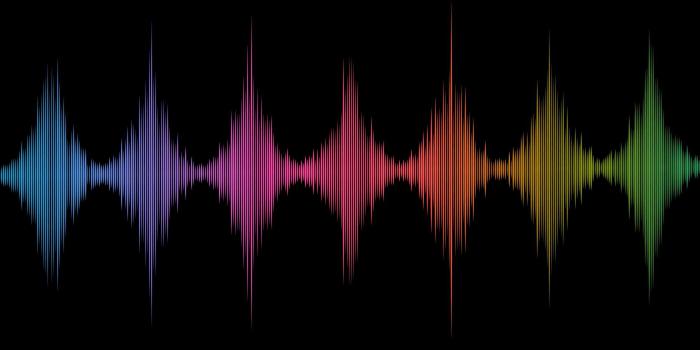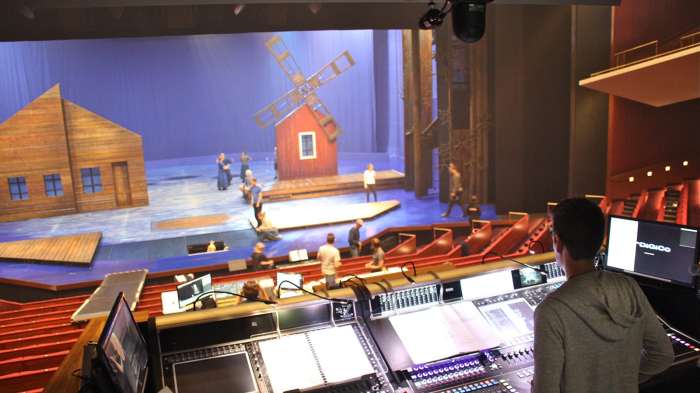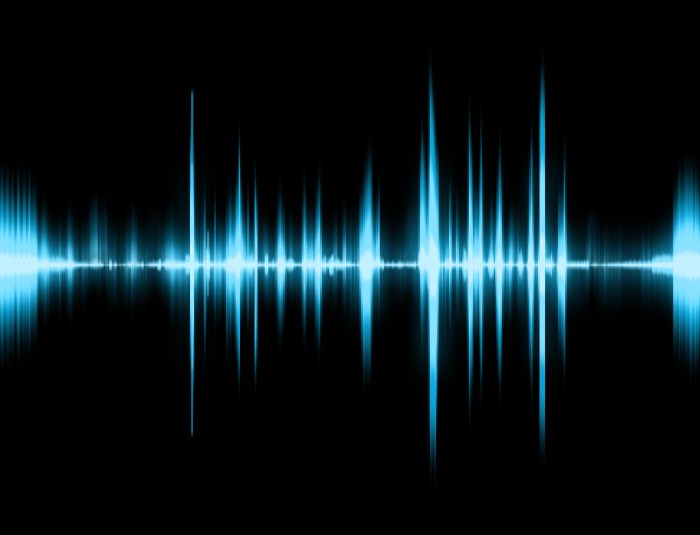Mastering the art of sound design can transform a passive viewing experience into an immersive journey. This exploration delves into the five key secrets to crafting believable and emotionally resonant soundscapes. We’ll cover fundamental principles, practical techniques for manipulating sound effects, and strategic placement for maximum impact, ultimately guiding you towards creating truly engaging audio experiences.
From understanding the nuances of diegetic and non-diegetic sound to skillfully integrating sound effects with music and dialogue, this guide provides a comprehensive approach. We will examine how different sound effect categories contribute to immersion and how to avoid common pitfalls in placement and timing. By the end, you’ll possess the tools to elevate your projects with impactful and believable audio.
Understanding Sound Design Principles for Immersion

Creating truly immersive experiences relies heavily on effective sound design. It’s more than just adding noises; it’s about crafting an aural landscape that complements and enhances the visual narrative, drawing the listener deeper into the story or game world. This involves a deep understanding of several core principles.
Effective sound design for immersion hinges on several key principles. Spatialization, for instance, uses the placement of sounds within a virtual soundscape to create a sense of depth and realism. Layering involves combining multiple sound elements to create a richer, more complex soundscape; a simple footstep, for example, might be layered with environmental sounds like rustling leaves or distant traffic to ground it in a specific location. Dynamic range, the difference between the loudest and quietest sounds, is crucial for creating contrast and impact. A sudden, loud sound can startle the listener, while a quiet, subtle sound can create a sense of tension or anticipation. Finally, the use of both diegetic and non-diegetic sounds is critical for creating a believable and emotionally resonant experience.
Spatialization Techniques for Enhanced Realism
Spatialization manipulates the perceived location of sounds within a three-dimensional space. This is achieved through techniques like panning (moving a sound from one speaker to another), binaural recording (capturing sound as it would be heard by a human listener with two ears), and reverb (simulating the reflection of sound waves in an environment). Imagine a scene where a character is walking through a vast cathedral. By panning the footsteps subtly and adding realistic reverb, the designer can convincingly convey the size and acoustics of the space, increasing the listener’s sense of presence. Similarly, a car speeding past could be spatially manipulated to move convincingly from left to right, enhancing realism. The careful application of these techniques creates a sense of believable three-dimensionality that significantly contributes to immersion.
Layering and Environmental Sounds for Depth and Context
Layering is the process of combining multiple sounds to create a more complex and realistic soundscape. For instance, the sound of a bustling city street isn’t just car horns; it’s a layered mix of car horns, distant sirens, chattering voices, the rumble of buses, and the subtle sounds of foot traffic. These individual elements combine to create a rich and believable auditory environment. Similarly, a forest scene might layer the sounds of birdsong, rustling leaves, and the distant creak of branches to build a dense, immersive auditory landscape. The more layers are added, the more detailed and believable the scene becomes, enhancing the feeling of being “present” in that location.
Dynamic Range and its Impact on Emotional Response
Dynamic range, the difference between the loudest and quietest parts of a soundscape, plays a crucial role in creating emotional impact. A sudden, loud sound, such as an explosion or a scream, can startle the listener and heighten tension. Conversely, quiet, subtle sounds can build suspense and anticipation. A horror film might use a quiet, unsettling soundtrack to build tension before a sudden, loud scare, maximizing the emotional impact. In contrast, a peaceful scene might utilize a low dynamic range to create a calming and serene atmosphere. The careful manipulation of dynamic range is a powerful tool for shaping the listener’s emotional experience.
A Fictional Scene: The Abandoned House
Consider a scene in a horror game where the player character enters an abandoned house. The soundscape would begin with a low, sustained drone of wind whistling through broken windows, creating an immediate sense of desolation. Diegetic sounds – those originating from within the game world – like the creak of floorboards underfoot and the distant scuttling of rodents, would enhance the realism. Non-diegetic sounds – sounds added for dramatic effect – such as a low, ominous hum or a subtle, unsettling musical motif, would amplify the feeling of unease. As the character explores, the sound design could dynamically change; perhaps a sudden crash from upstairs would punctuate the silence, followed by the faint, irregular breathing of something unseen. This interplay of diegetic and non-diegetic sounds, combined with spatialization and dynamic range manipulation, would create a terrifying and intensely immersive experience.
Diegetic versus Non-Diegetic Sound Effects
Diegetic sounds are those that originate from within the fictional world of the scene. Examples include footsteps, dialogue, and the sounds of objects within the environment. Non-diegetic sounds are those added for the audience’s benefit and do not originate from within the scene’s world. Examples include musical underscoring, narration, and sound effects used purely for emotional enhancement. While diegetic sounds contribute to realism and believability, non-diegetic sounds shape the emotional landscape and can guide the audience’s perception of the scene. A skillful blend of both is key to creating a truly immersive experience. For example, a scene of a tense negotiation might use diegetic sounds of hushed voices and the clinking of glasses to create realism, while non-diegetic music might build suspense, hinting at the underlying tension.
Selecting and Manipulating Sound Effects for Maximum Impact

Choosing and manipulating sound effects is crucial for creating immersive soundscapes. The right sound, expertly processed, can elevate a scene from mundane to breathtaking, enhancing the emotional impact and believability of your project. This section will explore effective strategies for selecting and manipulating sound effects to achieve maximum impact.
Common Sound Effect Categories and Their Applications
Categorizing sound effects helps in efficient selection and organization. Understanding the unique qualities of each category allows for targeted application, enhancing the immersive experience. The following are five common categories and their applications:
- Ambiences: These are sustained background sounds that establish the environment. Examples include bustling city streets, a quiet forest, or a roaring ocean. Ambiences provide context and contribute to the overall atmosphere, grounding the listener in the scene.
- Impacts: These are short, sharp sounds representing forceful actions or events. Examples include punches, explosions, or the crash of thunder. Impacts provide dramatic emphasis and punctuate key moments.
- Footsteps: These are crucial for creating a sense of movement and presence. The type of footstep sound (e.g., boots on pavement, bare feet on sand) significantly influences the perceived environment and the character’s actions.
- Mechanical Sounds: These encompass sounds from machines, vehicles, and other man-made objects. Examples include the whirring of engines, the click of a switch, or the creak of a door. They add realism and detail to scenes involving technology or machinery.
- Creature Sounds: These encompass animal sounds, from birdsong to roaring lions. They contribute to the realism and atmosphere, particularly in nature-based scenes or fantasy settings. The specific sounds chosen can evoke specific emotions and reactions from the listener.
Sound Effect Manipulation Techniques
Manipulating sound effects using tools like EQ, reverb, and delay is essential for tailoring them to specific scenes and moods. These techniques allow for precise control over the sound’s character and placement within the soundscape.
EQ (Equalization): EQ allows you to adjust the frequency balance of a sound. Boosting certain frequencies can enhance clarity or add warmth, while cutting others can remove muddiness or harshness. For example, boosting the high frequencies of a footstep sound can make it crisper and more distinct, while cutting low frequencies in an explosion can prevent it from sounding too muddy.
Reverb: Reverb simulates the reflection of sound within a space. Adding reverb to a sound can place it within a specific environment, making it sound more natural and realistic. A large hall reverb would suit a cathedral scene, while a small room reverb would be appropriate for a close-quarters encounter.
Delay: Delay creates echoes or repetitions of a sound. This can add depth and texture, or create a sense of vastness. A short delay can add subtle richness, while a longer delay can create a more dramatic and ethereal effect. For example, a subtle delay on a character’s voice can simulate a large, empty room.
Sourcing and Preparing Sound Effects
The process of sourcing and preparing sound effects involves several key steps:
- Search for Royalty-Free Sound Effects: Begin by searching reputable online sound effect libraries, ensuring you obtain sounds with appropriate licenses for your project.
- Download and Organize: Download the selected sound effects and organize them into a logical folder structure for easy access. This could be by category, scene, or project.
- Edit and Process: Use audio editing software to clean up unwanted noise, adjust levels, and apply any necessary effects (EQ, reverb, delay). This stage is crucial for ensuring a polished and professional sound.
- Test and Refine: Test the processed sound effects within the context of your project to ensure they blend seamlessly and achieve the desired impact. Iterate on the processing until you are satisfied with the results.
- Implement in Project: Import the prepared sound effects into your project’s audio editing software and carefully place them to enhance the immersion and storytelling.
Comparison of Sound Effect Libraries
Different sound effect libraries offer varying qualities and features. Choosing the right one depends on your specific needs and budget.
| Library Name | Strengths | Weaknesses | Pricing |
|---|---|---|---|
| Sound Ideas | Extensive collection, high quality | Can be expensive | Subscription/Purchase |
| Freesound.org | Large free library, diverse sounds | Variable quality, licensing can be complex | Free (with licensing restrictions) |
| Epidemic Sound | High-quality, royalty-free music and SFX | More expensive than some alternatives | Subscription |
| AudioJungle | Vast selection, affordable options | Quality can vary significantly | Purchase (per sound effect) |
Strategic Placement and Integration of Sound Effects

Effective sound design isn’t just about choosing the right sounds; it’s about placing them precisely to maximize their impact on the narrative. The timing and placement of sound effects are crucial for creating a believable and immersive experience, guiding the audience’s emotional journey, and enhancing the overall storytelling. A well-placed sound effect can subtly amplify tension, while a poorly placed one can disrupt the flow and pull the viewer out of the story.
Sound effect placement is a delicate balance between supporting the narrative and avoiding unwanted distractions. Precise timing is key to creating a believable and engaging experience. A sound effect arriving too early can telegraph an event before it’s visually revealed, while a delayed effect might feel unnatural and jarring. Careful consideration of the relationship between the visuals and the audio is paramount for seamless integration.
Common Mistakes in Sound Effect Placement and Their Avoidance
Three common pitfalls in sound effect placement include: inconsistent timing, overpowering other audio elements, and a lack of spatial awareness. Inconsistent timing refers to the unpredictable arrival of sound effects relative to the onscreen action. This can be avoided by meticulously synchronizing the sound effects with the visuals using a timeline or editing software. Overpowering other audio elements, such as dialogue or music, renders the sound effects ineffective and muddies the soundscape. This can be avoided by carefully adjusting the volume and dynamics of the sound effects to complement, not compete with, other audio elements. Finally, a lack of spatial awareness in sound placement can make the soundscape feel flat and unrealistic. Employing techniques like panning, reverb, and delay can create a more immersive and believable three-dimensional soundscape.
Using Sound Effects to Create Emotional Responses
Sound effects are powerful tools for manipulating the audience’s emotions. For example, a slowly rising crescendo of ominous sounds can build anticipation, while a sudden, sharp sound can create a moment of suspense. The resolution of a conflict or the arrival of a positive outcome can be emphasized with the use of calming or celebratory sounds. The careful selection and placement of sound effects are vital for guiding the audience through these emotional peaks and valleys.
Integrating Sound Effects with Other Audio Elements
Successfully integrating sound effects requires a nuanced understanding of how they interact with other audio elements, primarily music and dialogue. The goal is to create a cohesive soundscape where each element contributes to the overall narrative. This often involves careful manipulation of volume levels, equalization, and the use of spatial effects. Sound effects should never overshadow dialogue, which should always remain clear and intelligible. Music and sound effects can complement each other, with music setting the overall mood and sound effects providing specific punctuations of action. Consider the following example:
- Scene: A lone figure walks through a dark alleyway.
- Music: Low, suspenseful music with a slow tempo.
- Sound Effects: Subtle footsteps, distant whispers (added subtly to increase tension), the creak of a nearby door (to emphasize the feeling of being watched), a sudden metallic clang (to startle the audience).
In this scenario, the music sets a mood of unease, while the sound effects add specific details that enhance the sense of danger and suspense. The careful balance between these elements creates a richer and more immersive experience for the audience.
Epilogue

By understanding sound design principles, mastering sound effect manipulation, and strategically integrating audio elements, you can create immersive experiences that resonate deeply with your audience. This guide has equipped you with the essential knowledge and practical techniques to elevate your projects, transforming them from simple presentations to captivating sonic journeys. Remember, the power of sound design lies in its ability to evoke emotion, enhance realism, and ultimately, create unforgettable experiences.